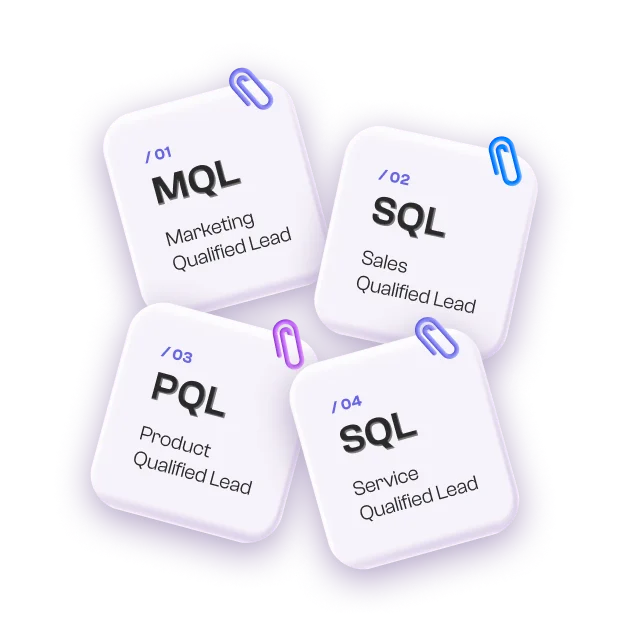Lead lists, often called leads lists, are foundational tools in targeted marketing and sales strategies. With the increasing importance of data-driven decision-making, understanding and utilizing lead lists effectively can significantly enhance your business’s reach and growth. This comprehensive guide will explore what lead lists are, the different types available, methods to obtain them, and how to maximize their value for your business.
What Are Lead Lists?
Lead lists, also known as sales leads lists or leads lists, are curated collections of potential customers’ information. These lists are meticulously compiled to facilitate targeted marketing and sales efforts, enabling businesses to identify and engage with potential clients more effectively.
A typical lead list includes names, contact details such as email addresses and phone numbers, company names, job titles, and other relevant data points. These data points can be enriched with additional information such as industry type, company size, geographic location, and past purchasing behaviors.
Lead lists are not just about having a list of names, they are about having a strategic resource that can drive focused outreach and personalized communication. For instance, a B2B lead list will focus on businesses rather than individual consumers, providing detailed insights into key decision-makers within target companies. This level of detail is crucial for crafting messages that resonate with your audience, increasing the chances of conversion.
Today, the sources of lead lists have expanded. While traditional methods like networking and referrals still play a role, digital channels have become dominant. Lead generation lists can now be created through various online activities, including social media interactions, content marketing, webinars, and virtual events. By integrating data from these activities, businesses can create dynamic, up-to-date lead lists that reflect current market trends and customer interests.
Moreover, the quality of lead lists directly impacts your marketing and sales success. High-quality lead lists, characterized by accurate and relevant data, can significantly improve your outreach efficiency. Conversely, poor-quality lead lists with outdated or incorrect information can lead to wasted resources and missed opportunities. Therefore, investing in high-quality lead list generation, whether by purchasing from reputable lead list companies or generating your own, is essential.
Evolution of Lead Lists
The evolution of lead lists has been marked by advancements in technology and changes in consumer behavior. In the past, lead lists were often static and generated from limited sources like trade shows or business directories. However, the digital revolution has transformed lead list generation into a dynamic process.
Today, businesses can leverage big data analytics, AI, and machine learning to create highly targeted lead lists. These technologies enable the analysis of vast amounts of data to identify patterns and predict which leads are most likely to convert.
The Role of Compliance and Ethics
In addition to technological advancements, regulatory changes have also shaped the landscape of lead lists. With the introduction of data protection regulations like GDPR in Europe and CCPA in California, businesses must ensure that their lead generation practices comply with legal standards.
This includes obtaining proper consent for data collection and providing transparency about how personal data is used. Ethical considerations are equally important, as maintaining trust with potential customers is critical for long-term success.
The Strategic Importance of Lead Lists
Lead lists are more than just a collection of contacts. They are strategic assets that can drive your business’s growth. By using lead lists effectively, businesses can streamline their marketing and sales processes, reducing the time and effort required to identify and engage with potential customers. A well-maintained lead list enables personalized communication, fostering stronger relationships and higher conversion rates.
Different Types of Lead Lists
Understanding the various types of lead lists is crucial for selecting the right one to meet your business needs. Each type of lead list serves a specific purpose and can significantly impact your marketing and sales efforts. Here are the primary categories of lead lists:
1. Sales Lead Lists
Sales lead lists are specifically designed for sales teams to target potential buyers. These lists are meticulously compiled to include detailed contact information such as names, phone numbers, and email addresses, along with purchasing behaviors and other relevant data points. By providing a comprehensive view of potential customers, sales lead lists enable sales professionals to tailor their approaches and strategies to close deals effectively.
A high-quality sales lead list often includes information about the lead’s previous interactions with your business, their position within their company, and their readiness to purchase. This level of detail helps sales teams prioritize leads based on their likelihood to convert, ensuring that time and resources are focused on the most promising opportunities.
In addition, sales lead lists can be segmented by various criteria, such as industry, company size, or geographic location, to further refine targeting and improve conversion rates.
2. B2B Lead Lists
B2B lead lists focus on business-to-business relationships, targeting companies rather than individual consumers. These lists contain data on key decision-makers within organizations, such as CEOs, CFOs, and other senior executives, making them essential for businesses that sell products or services to other businesses. B2B lead lists typically include company names, contact details, industry types, and information about the company’s size and revenue.
The main advantage of B2B lead lists is that they enable businesses to engage directly with the individuals who have the authority to make purchasing decisions. This targeted approach can lead to more meaningful conversations and higher conversion rates. Moreover, B2B lead lists can be further enhanced with additional data points, such as recent company news, financial performance, and technology stack, providing a deeper understanding of the target business and its needs.
3. Lead Generation Lists
Lead generation lists are compiled through various methods to attract potential customers who have shown interest in your products or services. These lists are often created through inbound marketing strategies, such as content marketing, social media campaigns, webinars, and other digital marketing efforts. Unlike sales lead lists and B2B lead lists, lead generation lists typically include individuals who have voluntarily provided their contact information in exchange for valuable content or offers.
Lead generation lists are particularly valuable because they consist of leads who are already engaged with your brand and have expressed interest in what you offer. This makes them more likely to convert into paying customers. Additionally, lead generation lists can be nurtured over time through targeted email marketing campaigns, personalized content, and other engagement strategies to move leads further down the sales funnel.
Methods to Get a List of Leads
Acquiring a robust list of leads is critical for effective marketing and sales strategies. There are two primary methods to obtain these lists, each with its advantages and considerations:
1. Buying Lead Lists
One of the quickest ways to acquire a list of leads is to buy lead lists from reputable lead list companies. These companies specialize in providing high-quality, targeted lists that can be tailored to your specific business needs. Purchased lead lists can save time and effort, allowing your sales and marketing teams to start outreach efforts immediately.
However, it is essential to vet these lead list companies to ensure the quality and relevance of the leads provided. Not all lead lists are created equal, and a poor-quality list can lead to wasted resources and low conversion rates. Look for companies that offer guarantees on data accuracy and provide detailed information about their data collection and verification processes. Additionally, ensure that the leads on the list have consented to receive communications to comply with data protection regulations.
2. Generating Your Own Lead Lists
Generating your lead lists involves using various strategies to attract potential customers organically. This method, known as lead list generation, includes tactics such as search engine optimization, content marketing, social media engagement, and direct outreach. While generating your own lead lists requires more time and effort, the leads generated are often more relevant and engaged with your brand.
Creating your own lead lists allows for greater control over the quality and specificity of the leads. You can tailor your lead generation efforts to target specific demographics, industries, or behaviors, ensuring that the leads collected align closely with your ideal customer profile. Additionally, self-generated lead lists can be continually updated and refined based on real-time data and feedback, making them a dynamic and valuable resource for your business.
Maximizing the Value of Your Lead Lists
Once you have acquired or generated your lead lists, it’s crucial to maximize their value to enhance your marketing and sales efforts. Proper management and strategic use of your lead lists can significantly improve your outreach effectiveness and conversion rates. Here are some strategies to ensure you get the most out of your lead lists:
1. Regularly Update Your Lists
Keeping your lead lists updated is essential to maintaining the accuracy and relevance of your contact information. Over time, data can become outdated due to changes in contact details, job roles, or company structures. Regularly verifying and cleaning your lists helps avoid wasting resources on outdated or incorrect leads. This process, often referred to as lead list maintenance, involves:
- Data Verification – Regularly check the accuracy of the contact information in your lead lists. This can involve cross-referencing with other data sources, using email verification tools, and manually updating records.
- Data Cleansing – Remove duplicate entries, incorrect information, and inactive contacts from your lead lists. This ensures that your marketing efforts are directed towards valid and active leads, improving overall efficiency.
- Frequency – Schedule regular updates, such as quarterly or bi-annually, to keep your lead lists fresh and relevant.
2. Segment Your Leads
Segmenting your leads is a powerful strategy that allows you to create highly targeted marketing campaigns that resonate with specific groups within your lead list. By categorizing leads based on factors like industry, company size, geographic location, purchasing behavior, or engagement level, you can tailor your messaging to meet their unique needs. Effective lead segmentation can involve:
- Demographic Segmentation – Group leads by characteristics such as age, gender, job title, or income level.
- Firmographic Segmentation – For B2B lead lists, categorize leads based on company-related factors like industry, revenue, number of employees, or location.
- Behavioral Segmentation – Segment leads based on their interactions with your business, such as website visits, email opens, or purchase history.
- Psychographic Segmentation – Consider the attitudes, values, and lifestyle preferences of your leads to create more personalized and engaging campaigns.
3. Use CRM Tools
Customer Relationship Management tools are invaluable for managing and utilizing your lead lists effectively. These tools help automate processes, track interactions, and analyze data to improve your lead nurturing and conversion strategies. Key benefits of using CRM tools include:
- Automation – Automate repetitive tasks such as follow-up emails, lead scoring, and data entry, freeing up time for your sales and marketing teams to focus on high-value activities.
- Tracking and Analytics – Monitor and analyze lead interactions across multiple touchpoints. This data provides insights into lead behavior and preferences, allowing you to tailor your approach for better results.
- Lead Nurturing – Implement automated lead nurturing campaigns that deliver relevant content and messages to leads based on their stage in the sales funnel. This helps build relationships and move leads closer to conversion.
- Collaboration – CRM tools facilitate collaboration between sales and marketing teams by providing a centralized platform for lead management and communication.
Why Lead Lists Are Essential for Your Business
Lead lists are a cornerstone of successful marketing and sales strategies. They provide a structured way to target potential customers, enabling businesses to focus their efforts on the most promising leads. By using lead lists, companies can streamline their outreach, improve conversion rates, and ultimately drive growth. Here’s why lead lists are essential:
- Targeted Outreach – Lead lists allow for precise targeting, ensuring your marketing and sales efforts reach the right audience. This targeted approach increases the likelihood of engagement and conversion.
- Efficiency – With a well-organized lead list, your teams can prioritize their efforts, focusing on leads that are more likely to convert. This improves overall efficiency and maximizes the return on investment for your marketing and sales activities.
- Personalization – Lead lists enable personalized communication by providing detailed information about potential customers. Personalized messages resonate more with recipients, leading to higher engagement and better relationships.
- Scalability – Lead lists provide a scalable way to expand your reach. As your business grows, you can continuously add new leads to your lists, ensuring a steady pipeline of potential customers.
FAQs on Lead Lists
1. How Do I Get a List of Leads?
You can get a list of leads by either buying them from reputable lead list companies or generating them through various marketing strategies. Each method has its advantages, depending on your business needs and resources. Buying lead lists provides immediate access to a large number of contacts, while generating your own lead lists through inbound marketing strategies ensures higher relevance and engagement.
2. What Are Lead Lists?
Lead lists are curated collections of potential customer data that businesses use to target their marketing and sales efforts. These lists typically include contact information and other relevant details to help businesses identify and reach out to potential clients. They are essential tools for driving targeted outreach, improving conversion rates, and supporting business growth.
3. How Often Should Lead Lists Be Updated?
Lead lists should be updated regularly to maintain their accuracy and relevance. It is recommended to verify and clean your lists at least quarterly. Regular updates help remove outdated information, incorrect data, and inactive contacts, ensuring that your marketing efforts are directed toward valid and active leads.
4. What Are the Benefits of Segmenting Lead Lists?
Segmenting lead lists allows businesses to create highly targeted marketing campaigns that resonate with specific groups within the list. By categorizing leads based on factors like industry, company size, geographic location, purchasing behavior, or engagement level, you can tailor your messaging to meet their unique needs. This targeted approach can lead to higher engagement rates and improved conversion rates.
5. How Can CRM Tools Enhance Lead List Management?
CRM tools are invaluable for managing lead lists effectively. They help automate processes such as follow-up emails, lead scoring, and data entry, which can save time and improve efficiency. CRM tools also track interactions across multiple touchpoints, providing insights into lead behavior and preferences. This data can be used to tailor your approach and nurture leads through personalized communication, ultimately improving conversion rates.
In summary, effectively maximizing the value of your lead lists is essential for enhancing your marketing and sales efforts. By regularly updating your lists, segmenting your leads, and utilizing CRM tools, you can ensure that your lead lists remain accurate, relevant, and highly effective. Lead lists are a strategic asset that, when managed properly, can drive significant business growth and success.
Conclusion
Lead lists are an essential tool for businesses looking to enhance their marketing and sales strategies in 2024. Understanding what lead lists are and their importance is crucial for effectively leveraging them to drive growth and success for your business. Lead lists, also known as leads lists, provide a structured way to target potential customers, enabling businesses to focus their efforts on the most promising leads.
By exploring the different types of lead lists, such as sales lead lists, B2B lead lists, and lead generation lists, you can select the most suitable option for your specific business needs. Methods to obtain lead lists include buying lead lists from reputable lead list companies and generating your own through various marketing strategies. Each method has its own advantages and can be tailored to fit your business goals.
Maximizing the value of your lead lists involves regular updates, segmentation, and the use of CRM tools. Keeping your lead lists updated ensures accuracy and relevance, while segmenting your leads allows for targeted marketing campaigns that resonate with specific groups. Utilizing CRM tools can streamline processes, track interactions, and enhance lead nurturing and conversion strategies.
Ultimately, the key to achieving your business goals lies in maintaining, segmenting, and effectively utilizing your lead lists. Whether you choose to buy lead lists or generate your own, understanding and implementing these strategies will help you stay competitive and drive significant business growth.
In summary, what are lead lists? They are strategic assets that, when managed properly, can transform your marketing and sales efforts, leading to enhanced efficiency, higher conversion rates, and sustained business success.



